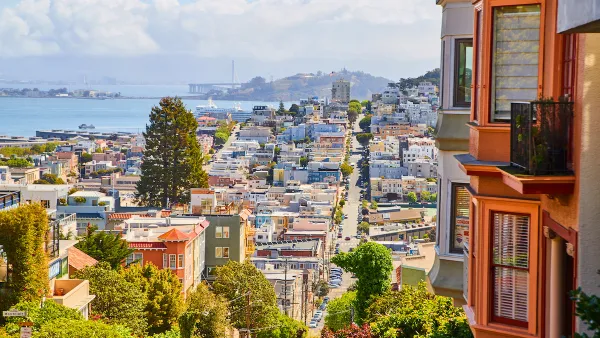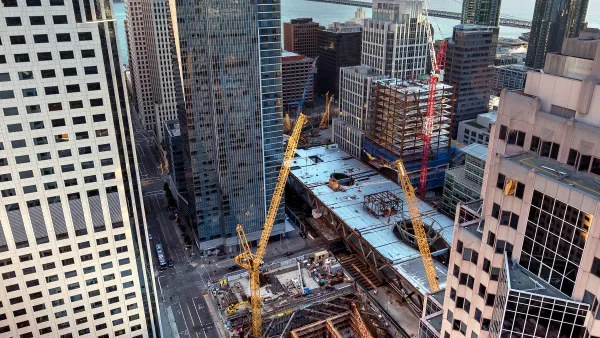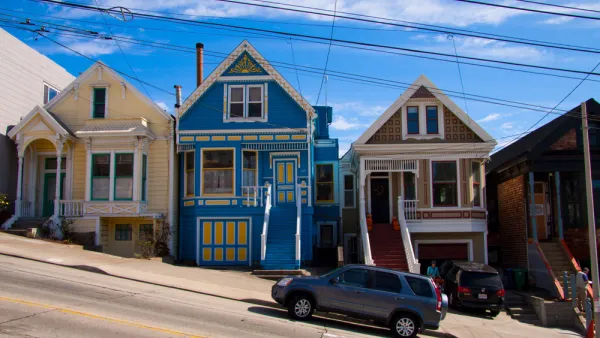Blogger Shane Phillips writes that San Francisco has two possible responses to its housing crisis: increase supply to accommodate newcomers, or hunker down and promote only subsidized housing. Both, he says, are lousy. Other coastal cities, beware.

San Francisco's housing crisis is old news. The new news comes from the almost daily responses from policymakers and stakeholders about what to do with it. The latest is a proposed moratorium on development in the rapidly growing Mission District. This proposal gives blogger Shane Phillips pause, in part because of the economic ramifications of a housing free: "The region may have a lock on the tech sector, but startups for unaffiliated industries would generally be foolish to locate in the Bay Area. San Francisco is on its way to becoming a monolithic populace, not just socioeconomically but commercially as well."
With demand likely to abate around the time Greenland's glacier's refreeze, the city faces two outcomes:
"In one, the supply-siders get their way and lots of new market-rate housing, and a decent share of affordable housing, is built in the Mission and across the city. In the other, the anti-development folks get their way and very little new housing is built in the coming years, with most new construction coming in the form of affordable housing constructed with city, state, and federal funds. The first outcome is extremely bad, the second is utterly disastrous."
This dilemma is important, according to Phillips, because of its ramifications for other attractive, geographically constrained cities.
"San Francisco is a harbinger, but the fate it foreshadows is not an inevitable one, as Tokyo and other cities have demonstrated. Places like Los Angeles and Seattle are on the cusp, and Chicago and Philadelphia are moving in the same direction, but they're all still salvageable. Boston and Washington, D.C. are further along than even LA or Seattle, and they'll have to adopt a regional housing strategy to address housing supply in their regions. This will be considerably more challenging than a go-it-alone approach, but their small size necessitates partnerships with neighboring cities that share responsibility for the affordability and equity of their respective regions."
FULL STORY: San Francisco is Doomed: A Cautionary Tale for Growing U.S. Cities

Analysis: Cybertruck Fatality Rate Far Exceeds That of Ford Pinto
The Tesla Cybertruck was recalled seven times last year.

National Parks Layoffs Will Cause Communities to Lose Billions
Thousands of essential park workers were laid off this week, just before the busy spring break season.

Retro-silient?: America’s First “Eco-burb,” The Woodlands Turns 50
A master-planned community north of Houston offers lessons on green infrastructure and resilient design, but falls short of its founder’s lofty affordability and walkability goals.

Test News Post 1
This is a summary

Analysis: Cybertruck Fatality Rate Far Exceeds That of Ford Pinto
The Tesla Cybertruck was recalled seven times last year.

Test News Headline 46
Test for the image on the front page.
Urban Design for Planners 1: Software Tools
This six-course series explores essential urban design concepts using open source software and equips planners with the tools they need to participate fully in the urban design process.
Planning for Universal Design
Learn the tools for implementing Universal Design in planning regulations.
EMC Planning Group, Inc.
Planetizen
Planetizen
Mpact (formerly Rail~Volution)
Great Falls Development Authority, Inc.
HUDs Office of Policy Development and Research
NYU Wagner Graduate School of Public Service




























